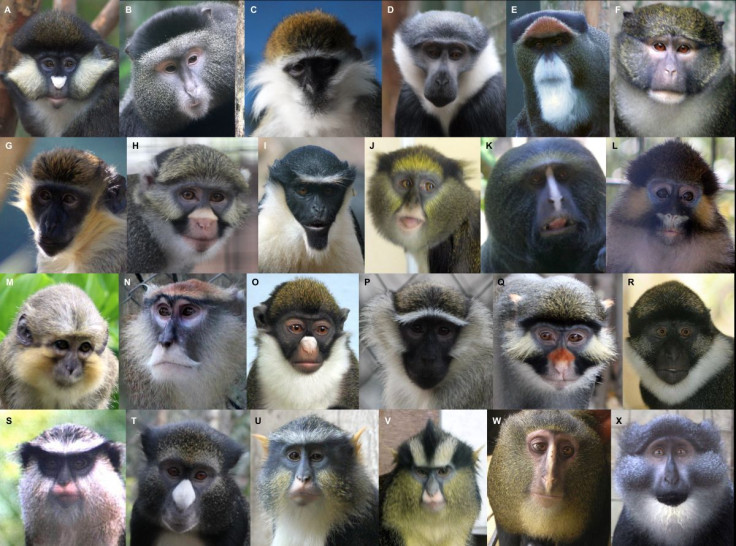Guenon Monkeys' Crazy Faces Evolved to Stop Incest

Guenon monkeys' colourful and diverse faces have evolved as a way to avoid interbreeding with closely-related species, new research shows.
Many guenons, a group of over 25 species of Old World monkeys, form mixed-species groups that travel and feed together, which could lead to crossbreeding. The mating of different species could lead to unhealthy and infertile offspring, although it rarely occurs in the wild.
Researchers from Exeter University and New York University used facial recognition technology to identify primate features from photographs of 22 guenon species.
The results show that the appearance of guenons has evolved to distinguish them from relatives living and foraging nearby, reducing the likelihood of interspecies breeding.
William Allen and James Higham, of New York University, and Martin Stevens, of the University of Exeter, analysed the faces of more than two dozen guenon species, providing rare evidence for the role of visual signals as barriers to crossbreeding.
"If closely related species overlap geographically, they run the risk of hybridising," Higham told Wired. "You need a good way to make sure you don't make bad mate choice decisions."
For the study, the researchers used guenons, a species native to the forests of West and Central Africa. They are characterised by different facial markings, such as eyebrow patches and ear tufts.
In the 1980s, Oxford zoologist Jonathan Kingdon proposed the theory that guenon faces evolved to visually reinforce differences between species. However, his ideas were limited to observations made by the naked eye, which did not provide sufficient evidence.
To prove his theory, the US and UK researchers set out to test Kingdon's hypothesis using facial recognition algorithms that can identify and quantify different facial features.
Allen, Higham and Stevens spent 18 months photographing species of guenons, Cercopithecini, in a wildlife sanctuary in Nigeria, as well as in zoos across the US and UK.
The results confirmed Kingdon's hypothesis, showing that different guenon faces were visually distinctive from other guenon sub-species they share space with.
"Evolution produces adaptations that help animals thrive in a particular environment, and over time these adaptations lead to the evolution of new species," Higham, senior author of the study, told the BBC.
"Our findings offer evidence for the use of visual signals to help ensure species recognition: species may evolve to look distinct specifically from the other species they are at risk of interbreeding with," he added.
"In other words, how you end up looking is a function of how those around you look. With the primates we studied, this has a purpose: to strengthen reproductive isolation between populations."
The findings are reported in the journal Nature Communications.
© Copyright IBTimes 2025. All rights reserved.






















